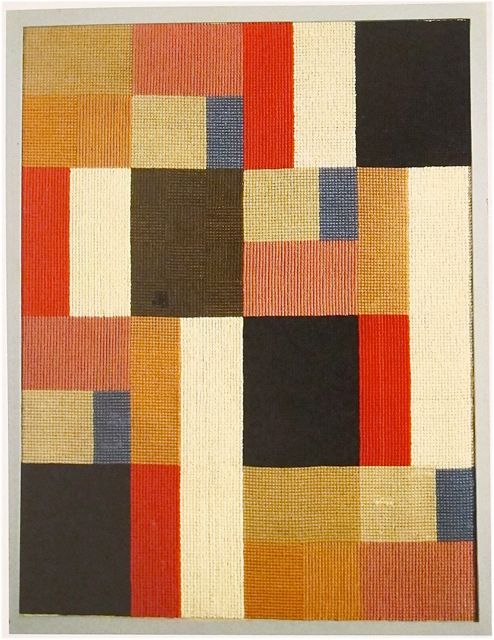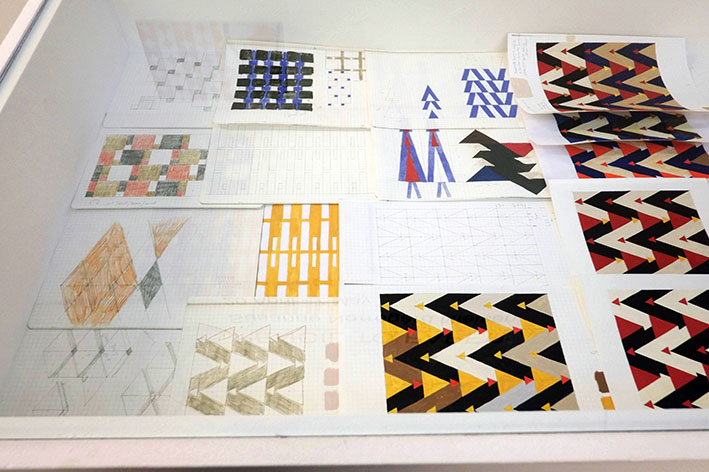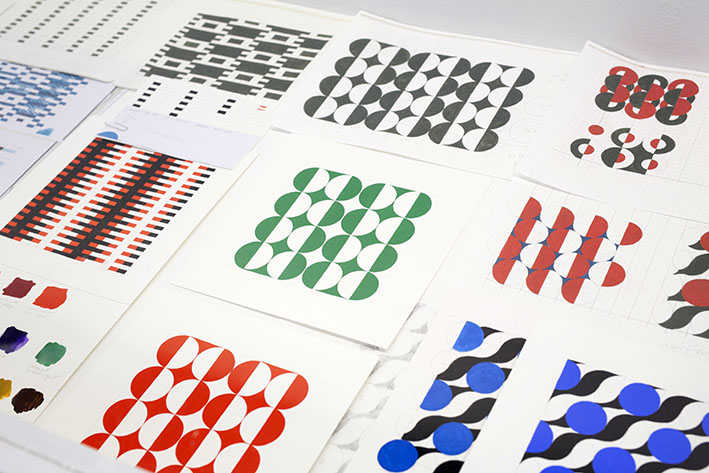What is the most natural way to divide a square?
To divide a square is easy but ‘natural’? A question I never had asked myself. It made me stop, pause, a simple and yet utterly fundamental question to ask. For several days I was drawing squares, dividing, contemplating. Some days it seems more natural to bisect it horizontally, other days vertically. Diagonally never seemed as natural as horizontally or vertically.
If you want to practise design, you might try the following:
Draw a square and try to divide it in its most natural and simplest way, so that you can use those forms or division lines as decoration.
Sophie Taeuber-Arp

Drawing several squares next to each other and dividing it came clear that depending on how you divide the square it gave a fundamental structure, a direction to develop the pattern from.
In the end I started the first drawing dividing it horizontal.
For each pattern I followed this process:
- Based on the initial pencil drawing in the sketchbook I would make a new pencil drawing on a bigger sheet of square paper and photocopy the drawing to repeat the pattern in order to scale up.
- Through this process I was able to decide on the size of the pattern.
- The full scaled photocopy enabled me to draw up a unique grid structure, based on the pattern, on to a sheet of paper.
- Using the grid, I could draw the pattern, finally adding colour.
Something happens when you need to physically carry out an instruction, from text to action, via the eye hand connection. Working through the instructions it become clear that there are three layers of structures. The grid is the first structure, then structure of the pattern, and thirdly colour structure.
The eight instructions are laid out in four pairs. One instruction flows into the next and refers back to the first. This movement between each pair of instructions significantly increase your understanding of the potential of the next pattern. At the same time, you get a fundamental understanding of the pattern you have just made.
2) Preparatory work for drawing no. 5 and 6 Pencil, colour pencil, watercolour and gouache on paper. Image credit: Susanne Nørregård Nielsen
3) Preparatory work for drawing no. 3 and 4 Pencil, colour pencil, watercolour and gouache on paper. Image credit: Alan McAteer.



